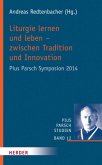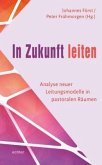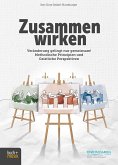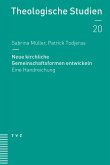Liturgical languages are notoriously rigid: they are fixed, sacred, and resistant to change, despite surrounding linguistic developments. This work focuses on the highly specialized and stylized liturgical language of Russian Church Slavonic (RCS). Historically, authorities strictly controlled RCS so that it would conform to established norms. Nevertheless, innovations arose in response to various conditions. One wave of innovations, spanning the 16th-18th centuries, was a long and deliberate process, leading to the codification of RCS grammar and the renovation of liturgical texts. Another wave of innovations in RCS was incidental and took place following sudden upheaval, namely the Bolshevik Revolution and subsequent emigration abroad of Orthodox Christians that resulted in an international diaspora. Detached from traditional institutional structures, the ultimate result was freedom for the hymnographer to innovate. This work analyses both waves of RCS innovations: the reforms of the 16th-18th centuries as seen in hymnography from those centuries, and the 20th century compositions of Valeria Hoecke, a self-taught hymnographer of the Russian diaspora. Hoecke's hymnography demonstrates what can happen to a liturgical language when traditional language controls are absent. In both older and newer hymnography, this work analyzes person and viewpoint, as well as participles, verbs, and overall formal structure of the compositions. Until now, the tendency has been to describe RCS through the lens of another language. In the 16th-18th centuries, for example, grammarians wrote books modeling RCS grammar on that of Greek or Latin; more recently, 20th-21st century grammarians model RCS grammar on that of Old Church Slavonic or modern Russian. The present work is unique in its demonstration that previous analyses of RCS have obscured certain grammatical and rhetorical structures. This work shows that RCS--both old and new--has its own distinct formal structure and systems of person and viewpoint, participles, and verbs.
Hinweis: Dieser Artikel kann nur an eine deutsche Lieferadresse ausgeliefert werden.
Hinweis: Dieser Artikel kann nur an eine deutsche Lieferadresse ausgeliefert werden.








